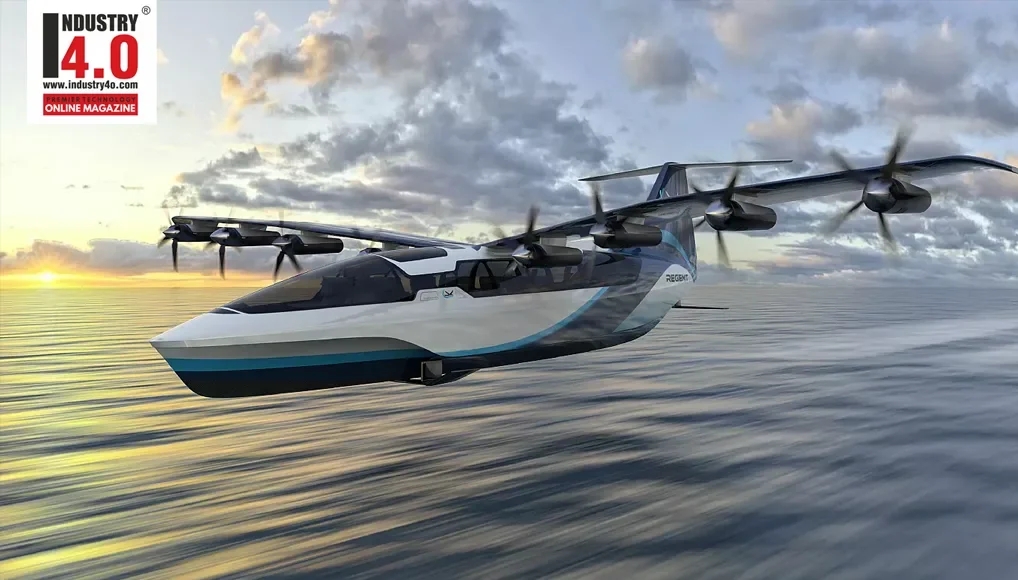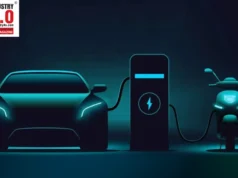WIG Electric Sea Gliders low cost and sustainable
Wing In Ground Electric Sea Gliders offer extremely low cost, efficient, zero emission, safe transport over the sea and inland waterways. They are ideal for logistics, defense, and tourism.
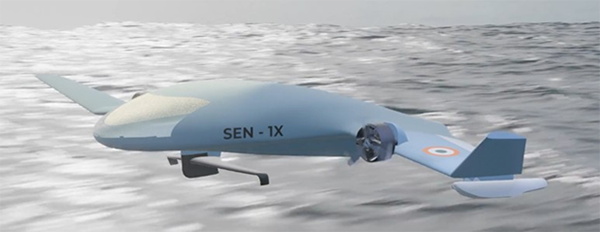
Figure 1. Sea Glider from Waterfly Technologies
It is now the turn of airplanes to be ‘electrified.’ The ‘new flight in town’ is the electric sea glider. It overcomes many of the negatives of ICE airplanes, such as a far lower cost per passenger, zero footprint, total non-pollution, zero emissions, and low noise. It operates with existing docks used for boats, and in an emergency, it lands on water and will not crash.
 A handful of entrepreneurs offer these aircraft for commercial use. The technology incubation center, IIT Madras, has launched Waterfly Technologies, and USA-based REGENT Craft started a venture in 2020. Several other firms have launched these products.
A handful of entrepreneurs offer these aircraft for commercial use. The technology incubation center, IIT Madras, has launched Waterfly Technologies, and USA-based REGENT Craft started a venture in 2020. Several other firms have launched these products.
In March 2025, REGENT launched a full prototype named Paladin. This aircraft, with a length of 55 feet, wingspan of 65 feet, top speed of 290 kilometers per hour, range of 290 kilometers, flies 9-10 meters above water, with 12 PAX and two crew. The noise at < 30 Decibels makes it quieter than a helicopter.
Waterfly Technologies claim that the journey on its sea gliders with a range of 500 kilometers will cost less than INR 600 or 50 cents per kilogram per kilometer. This is less than a train ticket, and considerably less than an airplane journey. The aircraft is suitable for tour operators, defense forces, logistics firms, and even for personal use.
What are sea gliders? How big/ small are they? Who operates them? What will be the cost for a seat? Can they carry passengers and cargo? Which segment are they used in? How safe are they? This article answers these and other questions.
What are Sea Gliders?
Electric sea gliders are modern versions of seaplanes and integrate two technologies. The first is that rechargeable electric motors power these aircraft. The second is that these are Wing-In-Ground (WIG) aircraft.
Norman Leonard explains in his book that WIG aircraft, also called ground effect aircraft, fly over open water by using the ground effect principle. In this effect, the distance between the wings and the water surface is just a few meters. The aircraft glides over the surface, and the aerodynamic drag-lift requirement is reduced.
The air pressure rises on the underside of the wings, and the pressure over the top is reduced. This low-high pressure differential is balanced and retained as the airflow moves to the ends. A vortex is developed that forms a lift-induced drag. With a large wing span, the drag is reduced for the lift, increasing the efficiency of the lift. Figure 2 illustrates the WIG effect.
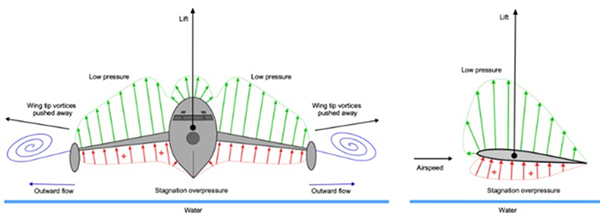
Figure 2. WIG Aircraft using the WIG Effect (Embry- Riddle)
Michael Halloran and Sean O’Meara, in their work for the Australian Aeronautical and Maritime Research Laboratory, explain that WIG was introduced in the 1960s. These aircraft usually have longer wings than conventional aircraft, and the water or ground increases the aspect ratio as the surfaces stop the expansion of the vortex at the wing tips.
As a result, WIG aircraft develop sufficient power to rise a few meters above the surface and can also move forward at significant speeds. These aircraft are midway between hovercrafts and conventional airplanes. If sufficient power is available, the aircraft can fly to 10+ meters high. Higher flights are not possible since the WIG effect is lost.

Figure 3. Sea Glider in Flight (REGENT Craft)
Initially, the craft moves forward on the hydrofoils until takeoff speed is reached. The automatic hydrofoils in place of wheels retract when the flight takes off. Pontons under the wings provided the essential stability while landing and taking off.
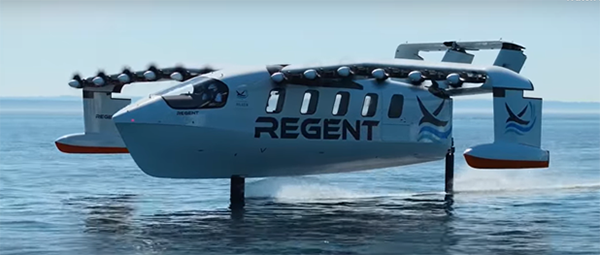
Figure 4. WIG Sea Glider with hydrofoils active (REGENT Craft)
WIG aircraft can even fly on land and ice. However, the presence of trees, buildings, and other vehicles creates dangerous obstacles. While they can fly over sand, dust particles can clog the motors. These aircraft are ideal for travel over water.
What is the structure and specifications of Sea Gliders?
The external and some elements of the electric sea glider are similar to an ICE airplane. It has a fuselage with two wings and a tail. Propellers powered by electric motors are installed on the wings, and passengers occupy seats along the length. However, there are many other differences. A sample specification for the Viceroy model is illustrated in Figure 3.

Figure 5. Specifications of the Viceroy electric sea glider (REGENT Craft)
Manufacturers build sea gliders as per their product line and market requirements. They are rated as per the size, passenger or payload capacity, overall dimensions, motor power, wing type, and avionics. Higher power rating allows larger payloads, and or distance. The body or fuselage is made of reinforced carbon fiber, making it light and strong.
What is the air worthiness of Sea Gliders?
Nandkumar Bhopale et al., in their document on the design of WIG aircraft, explain that the wings of WIG undergo intense pressure from the lift forces. A poorly designed or fitted wing can shear if the loads are high.
In choppy water, the aircraft bobs over the waves, creating additional shear forces on the wings. Flying in rough headwind creates extra forces and an extra load on the motors and wings. Hence, the cross-section is reduced to a minimum. However, seaworthiness is an issue.
The International Maritime Organization has released requirements for the Wing-in-ground (WIG) Craft (MSC/Circ.1126), 2011. Initially, only ships and submarines were covered by the organization. Considering the introduction of new water-faring crafts, new guidelines cover WIG.
The directives give clear mandatory specifications for buoyancy, stability, structure, directional and altitude controls, safety and fire systems, electricals and battery, and on several other important parameters.
To begin commercial operations, WIG operators must obtain the Permit to Operate WIG crafts, and each plane should have a safety certificate. The requirements are implemented at each port where the craft would operate. These permits are not issued unless airworthiness is satisfactory.
What are the success factors of Sea Gliders?
Kristin Kerem et al. mention several success factors for the successful commercialization and adoption of WIG craft. Government bodies and regulatory authorities should have a positive attitude towards these aircraft. While strict compliance and safety measures are needed, bureaucracy and delays in granting permits should be reduced.
This is an evolving technology and investment; assurances and interest from the private sector are essential. Private firms can enter into presale agreements and book aircraft to encourage growth. Since these aircraft operate in the coastal regions, clear routes and times should be defined so that accidents with ships and boats do not occur.
It is essential to combine and integrate other technologies such as GPS, weather forecast, avionics, improved battery and motor systems, and reinforced fiber technology. These technologies are already in use, and the government should support and offer incentives to entrepreneurs and manufacturers.
Who operates Sea Gliders?
In India, the IIT Madras technology incubation center has supported Waterfly Technologies. The team has developed a prototype for testing and plans to launch a 20-seater by 2026. There are plans to start long-distance flights from Chennai to Singapore by 2029.
REGENT of the USA has raised more than 10 billion USD for its range of sea gliders. Many firms, such as Japan Airlines, Alaska Airlines, Hawaiian Airlines, Yamato Transport, and several others, have invested in the firm.
What are the prices for a long-distance seat on a Sea Glider?
According to Waterfly Technologies, electric sea gliders have zero fuel costs. They can operate from existing small jetties and ports; hence, expensive airport landing and parking charges are avoided. They fly below the radar in ‘stealth’ mode, making them ideal for covert operations of defense forces.
Maintenance cost is reduced since the conventional ICE engine is replaced by a battery-driven electric motor. Two crew members, a pilot and a hostess, are sufficient with minimal ground crew. They are also fast and travel at speeds of more than 300, allowing for quick travel to short distances.
Considering all these factors, Waterfly Technologies estimates that the costs will be about 600 INR for a distance of 1500 kilometers. Larger crafts have a payload of 1500 kilograms, and logistics will find this aspect very economical.
How safe are Sea Gliders?
Electric sea gliders have to clear strict compliance and safety certifications with routine maintenance checks. In addition, they fly just a few meters above the water surface. In case of an emergency, they can land on the water and wait for rescue. The possibility of horrific air crashes of conventional aircraft does not exist.
Hence, electric sea gliders have a high level of safety.
Future trends – AI and Automation in Sea Gliders
The market for WIG electric sea gliders is poised to grow. Times Tech, without speaking of General Electric airplanes, estimates that the market, which was worth USD 11.4 billion in 2024, will reach USD 75 billion by 2034. This strong growth should attract investors.
The Electric WIG Sea Glider is an emerging and evolving technology. There are reports of automation and AI in these aircraft. Automation will mean pilotless flights, ideal for defense and logistics, for tourists.
Use of AI will help in predictive maintenance, route planning, and scheduling. Developments are underway to use hydrogen for power, and this technology will reduce the costs further while increasing the range.
Final Thoughts
Wing-in-Ground Electric Sea Glider is an excellent technology that will revolutionize coastal transport. It is zero emission and sustainable, removing the need for expensive fossil fuels. It is very economical since the fuel is free, and the existing infrastructure of jetties can be used. It gives direct contact to remote islands that cannot accommodate larger airplanes.
The use of AI and automation to increase efficiency will further strengthen the product. The stealth and zero radar footprint make it ideal for defense forces. It is an ultra-low budget air transport and will benefit the delivery of government services, and also boost tourism. This technology needs immediate help from the government and the private sector.
Legal Disclaimer: The views, thoughts and opinions expressed in this article are those of the author and do not reflect the views or positions of INDUSTRY 4.0. The content is provided by the author as-is and is published solely for informational or educational purposes.
INDUSTRY 4.0 does not guarantee the accuracy, completeness or usefulness of any information presented and is not liable for any errors, omissions or outcomes resulting from the use of this information. The responsibility for the content lies entirely with the author.
About the author :
 Mr. Shashi Kadapa
Mr. Shashi Kadapa
Based in Pune, India, Mr. Shashi Kadapa is an engineer, MBA and has worked with leading IT and manufacturing firms. A multi-hyphenate, he has roles as a technical writer, and SEO content writer with a focus on IT and tech topics.
Creative fiction is his passion, and he serves as the managing editor of ActiveMuse, a journal of literature. His stories across multiple genres are published in more than 45 US and UK anthologies.
Mr. Shashi Kadapa can be contacted at :
E-mail | LinkedIn | Blog | Mobile : +91 7387492371
Also read Mr. Shashi Kadapa earlier article:

